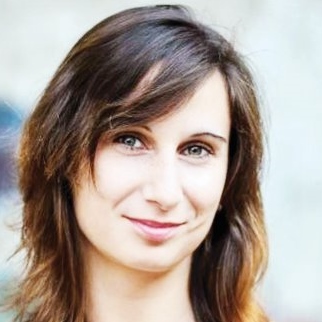
Featured Item

Catholics preserving Polish Jewish life for sake of national identity

click to dowload our latest edition
CLICK HERE TO SUBSCRIBE TO OUR NEWSLETTER


Published
4 years agoon
By
adminMIRAH LANGER
Yet for Jakub Nowakowski, Tomasz Kuncewicz, and Joanna Krauze, the need for answers has never had a neat ending. Instead, it has compelled them to carve out careers concerned with the preservation of Jewish history in Poland.
As Nowakowski explains of his experience of studying Jewish Studies at university, “At some point, we [he and his fellow Polish students] realised that we were living in this post-Jewish space. All of us had the same experience of finding that a big part of our story was created on the shoulders of some other people who were gone. All of us were looking for the same answers: who were those people? What happened to them?”
It was a journey that led to him serving as director of the Galicia Jewish Museum in Kraków, a role he has fulfilled since 2010.
For Kuncewicz, the director of the Auschwitz Jewish Center for nearly two decades, his career was inspired by a similar realisation; as was the case with Krauze. She runs a tour company focusing on the Jewish heritage in what was Eastern Poland before 1939, as well as working with charitable associations preserving Jewish memory, particularly in the Lublin region of Poland where she is based.
Yet, while all three aren’t Jewish, they don’t see the work they have chosen as an effort enacted on behalf of “the other”.
Rather, as Kuncewicz puts it, “These are my people; these were citizens of Poland; they were Jewish and Polish at the same time. Jews have lived in Poland for almost a thousand years. It’s obvious that they were part of my country and part of my identity.”
Krauze reiterates this point. “Because I’m Polish and not Jewish, a lot of people would tell me this isn’t my story. I believe it is my story because I’m Polish. For the sake of national identity, it’s very important to talk about this story, to commemorate the Holocaust, but also to talk about what happened before the war, that there was this whole Jewish Polish life.”
It was a centuries-old life, of which Nowakowski started noticing the traces as he grew up Catholic in Kazimierz, historically the Jewish district of Kraków.
“For the larger part of my childhood, I had no idea of the Jewish past. It wasn’t something we would discuss. It wasn’t something to be proud or ashamed of, it just wasn’t a part of the landscape. Even though the tangible objects of that past, such as synagogues, were still there, they sat in darkness.”
A school project about the neighbourhood led Nowakowski to discover a Jewish cemetery that lay behind a wall he had passed by every day.
“I started to ask questions, and discovered that I was actually living in a kind of Atlantis, a land of ruins.”
For Nowakowski, like the other three, what their grandparents did and didn’t speak of or know, also sparked his interest.
He came to understand through his grandparents that the contact in his district between Jews and non-Jews took the form of “living next to them, but not with them”. As such, the portrait that emerged remained flattened to a “Fiddler-on-the-Roof kind of Jew”.
Over time, “trying to put together the pieces of the puzzle” of who this defining Polish community had been became increasingly important to Nowakowski.
Meanwhile, Kuncewicz also found himself challenged by the disparate portraits of Jewish life that his maternal and paternal grandmothers presented him.
“One was full of stories of life before the war, of Jewish neighbours, Jewish friends – she was very nostalgic about this time and this multicultural world that doesn’t exist anymore. Then I had another who didn’t have such an enthusiastic memory of this time. She was a bit anti-Semitic, which at that time was the norm. Yet the other one was the stronger personality, and it was she who had an impact on me and developed my interest.”
Krauze’s paternal grandfather had been a prisoner in Majdanek owing to his involvement in the Polish underground army, and wouldn’t speak of it. His silence became deafening.
She also became intrigued about the snippets he would reveal about his pre-war life, and his connection to Jewish people. “In the town that I grew up in there were no Jews. It made me interested in what exactly he was talking about.”
For all three, the work they do is a gratifying culmination of these early experiences, and which aims not just to preserve the past, but create a new way of living in the present.
“We want to reach the point where people will take on their own shoulders the role of guardians. Not for me, not for you, not for the chief rabbi of Warsaw, but because they understand that this is their story most of all,” says Nowakowski.
He says this task has greater political resonance with the current right-wing government in Poland. “The government is trying to portray the Jews as a stranger and an enemy.”
The museum, therefore, is “critical of the things that are happening, as we see the danger and the problems that became more and more visible in Poland”.
Along with preserving the Jewish history of the town of Oświęcim – the site which would later be taken over by the Nazis in order to erect the Auschwitz-Birkenau death camps – the Auschwitz Jewish Center focuses on diversity and anti-discrimination education.
For Kuncewicz , these two pillars remain crucial in ensuring that the Holocaust doesn’t simply remain about a “distant past”.
